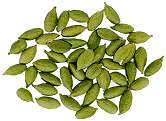
Company Information
Ask for more detail from the seller
Contact SupplierCardamom, the 'queen of spices', is a rich spice culled from the seeds of a perennial plant, Elettaria cardamomum. It is one of the highly prized spices of the world. It is believed that the original home of this precious spice is the mountains of the South- Western parts of the Indian Peninsula. As early as the 4th century BC cardamom was used in India as a medicinal herb and was an article of Greek and Roman trade.
Cardamom is a native of Western Ghats in South India. India had a virtual monopoly of cardamom till recently. But now it is being cultivated in Guatemala, SriLanka, Thailand, Laos, Vietnam, Costa Rica, El Salvador and Tanzania. Cardamom cultivation in India is confined to three states, viz. Kerala, Karnataka and Tamil Nadu.
Cardamom is a perennial bushy herb. The tuberous underground rhizome is its real stem and the aerial shoot is a pseudostem and formed by the encircling leaf sheaths. The leaves are distichous, long, alternate and lanceolate acuminate in shape. Flowers are borne on panicles and they emerge directly from the underground stem on long floral stalks. They are hermaphrodite and zygomorphic. The corolla is tubular, 3-lobed, pale green, androecium with petalloid labellum white in colour with pink or purplish veins, composed of three modified stamens with an undulated edge. There are two further rudimentary staminodes and one functional stamen. The fruit are tri-locular, ovoid or oblong, greenish-brown capsules containing about 15-20 seeds attached to axile placenta. Light reddish or dark reddish brown seeds are irregularily 3-sided, transversely wrinkled or furrowed and are covered by a membraneous aril.
Cultivation
Cardamom grows abundantly in altitudes ranging from 900 to 1370 m above sea level, with a warm humid atmosphere, evenly distributed rainfall and humus-rich loamy soil. It thrives best under moderate shade. Cardamom is propagated both vegetatively and by seeds. Seeds from well ripened fruits are sown in raised beds and when the seedlings attain a height of 25-30 cm they are transplanted into field or secondary nursery beds. Vegetative propagation is by means of clones, a portion of the rhizome with one or two new tillers. Micropropagation is also widely employed for the propagation of cardamom. Planting is normally done in June-July with the receipt of south-west monsoon rains in pits or trenches at a spacing varying from 0.9 to 3.0 m depending on the type of cardamom.
The maiden crop in cardamom is obtained in the third year of planting. Flowering commences in April-May and continues till July-August. Harvesting is done at an interval of 30-40 days and only fruits which are just nearing ripeness are harvested. Harvested fruits are dried by exposing them to sun light or by heating or by flue curing. The dried capsules are cleaned, sorted and graded based on bulk density, colour and size. Capsules which lack uniform green colour are bleached by using bleaching powder, sulphur dioxide or hydrogen peroxide.
The chemical composition of cardamom varies considerably with variety, region and age of the product. The principal quality of determinant is the content and compositon of the volatile oil. Cardamom contains between 2% and 10% essential oil, out of which the major portion is in seeds. The volatile oil contains about 25-40% cineole, 30-40% a-terpinyl acetate and about 1-2% limonene.
Aroma and flavour
The cardamom seeds have a warm, slightly pungent and highly aromatic flavour. They are popular seasoning in Oriental dishes, particularly curries and in Scandinavian pasteries. In Middle East countries it is used mostly in the preparation of 'Gahwa', a strong cardamom-coffee concoction.
Medicinal and other use
The cardamom oil is a precious ingredient in food preparations, perfumery, health foods, medicine and beverages. A good portion is consumed for chewing or as a masticatory item. In medicine, it is used as powerful aromatic, stimulant, carminative, stomachic and diuretic, but rarely used alone. It also checks nausea and vomiting, helps in combating digestive ailments. Herbal lores on this spice suggest it can be used to freshen your breath and support smooth digestion.

